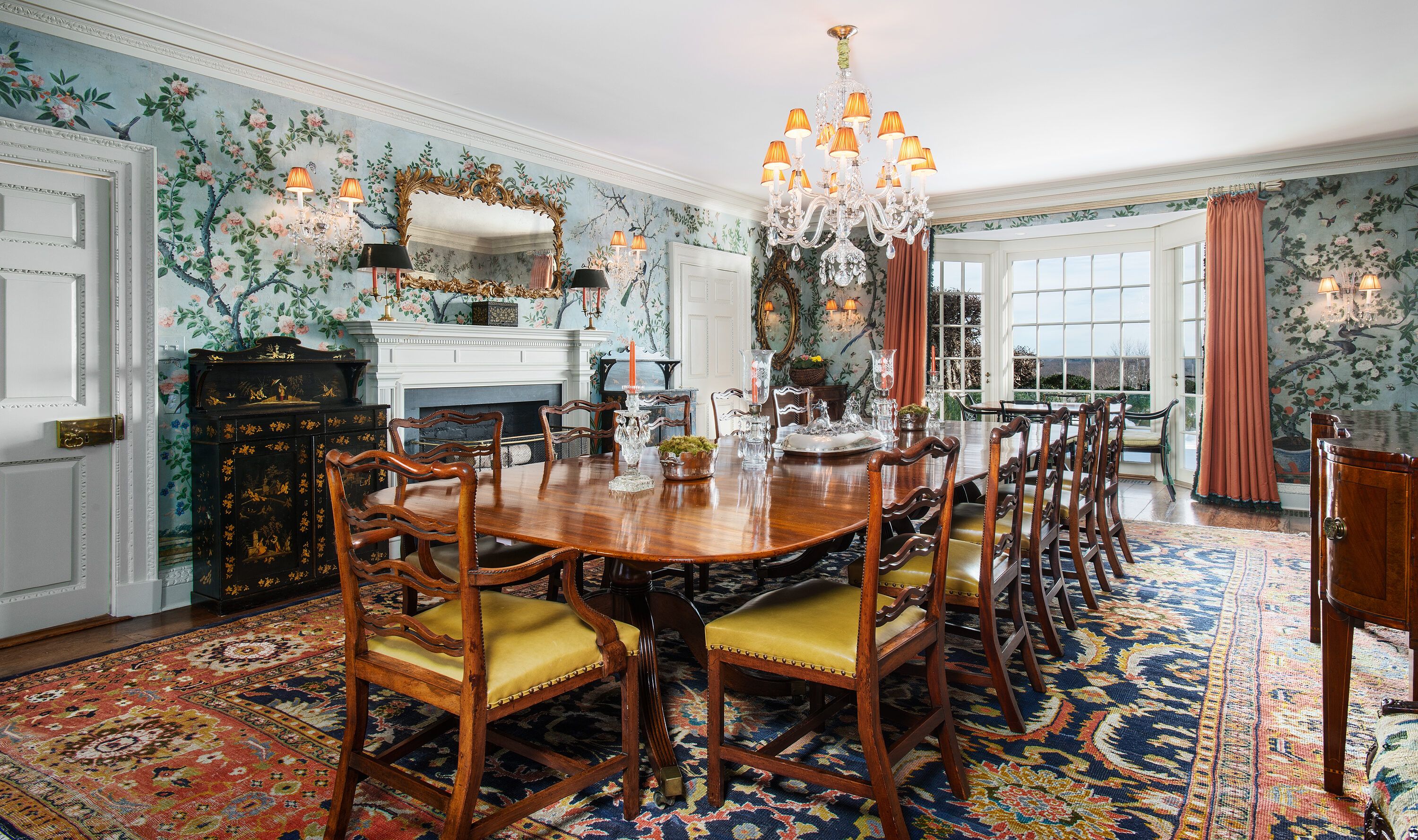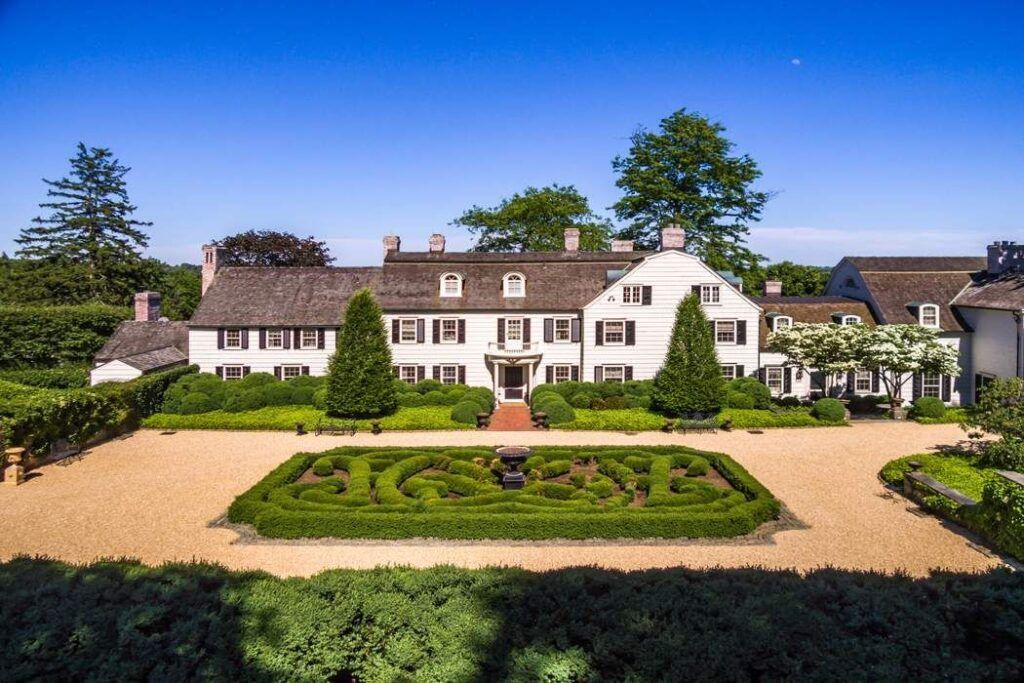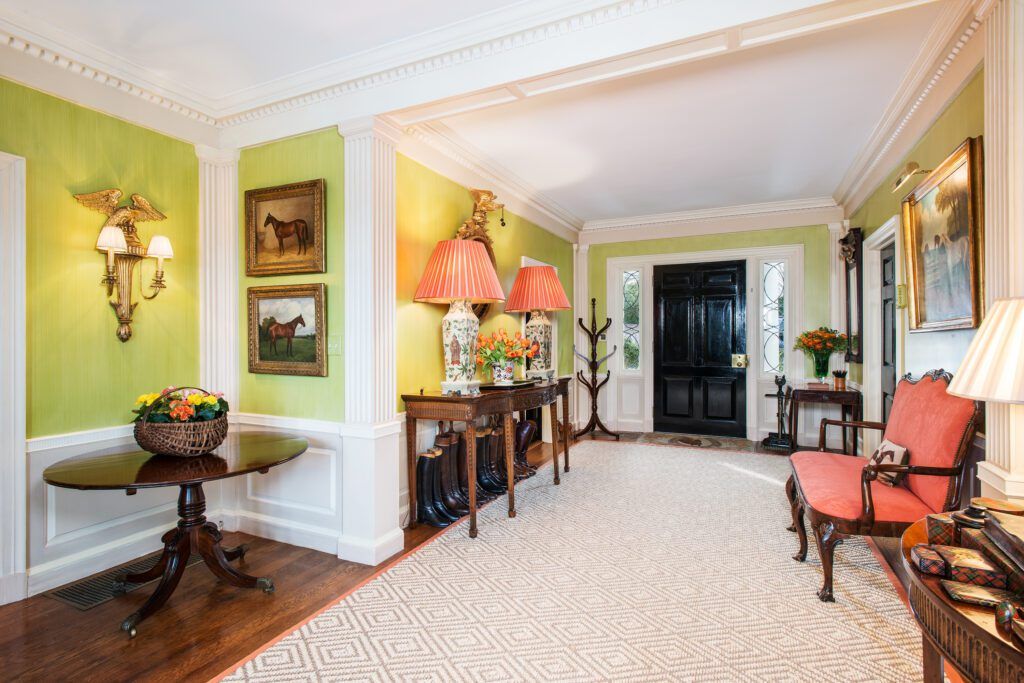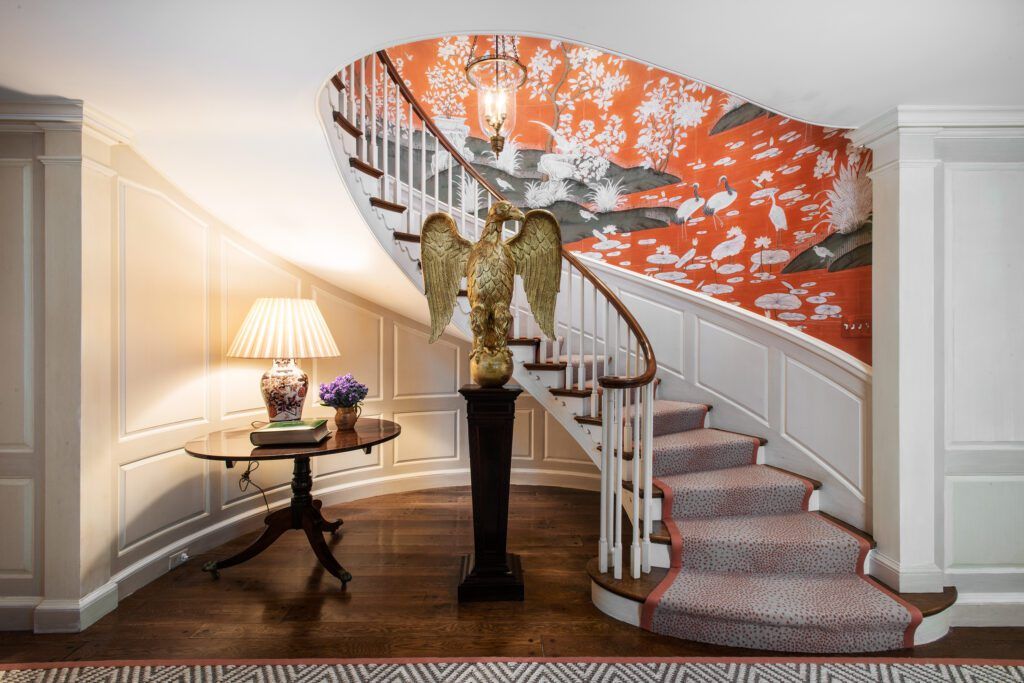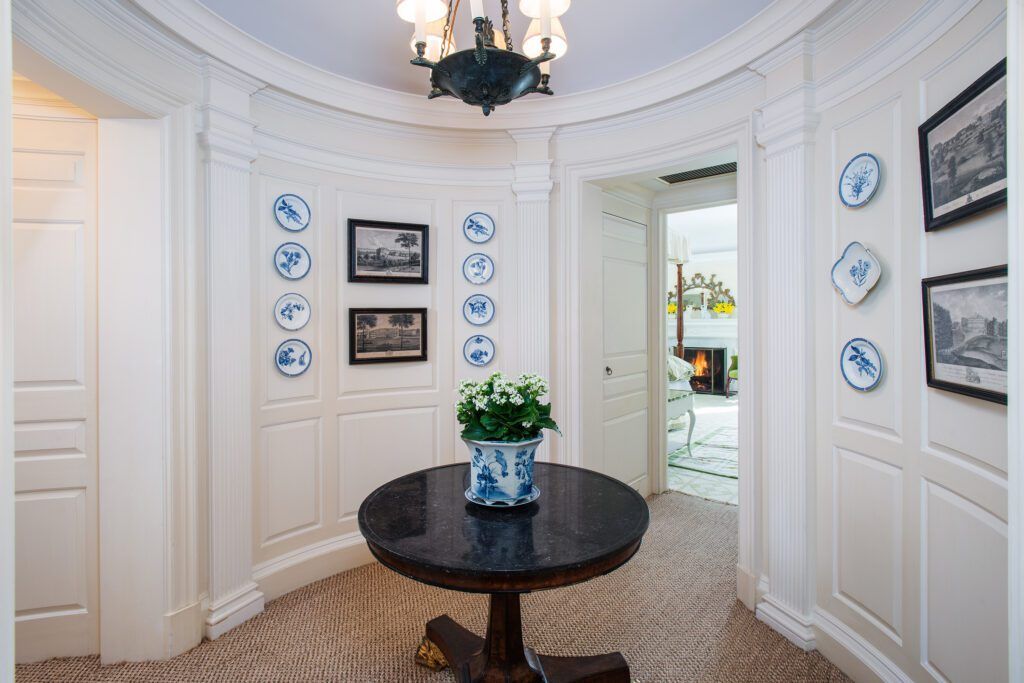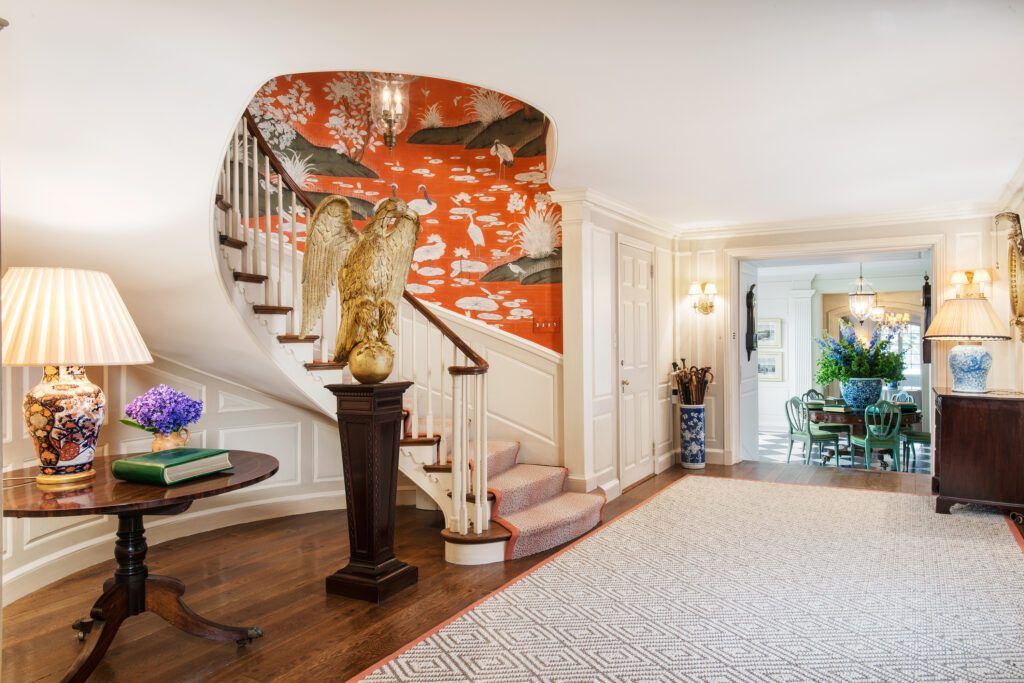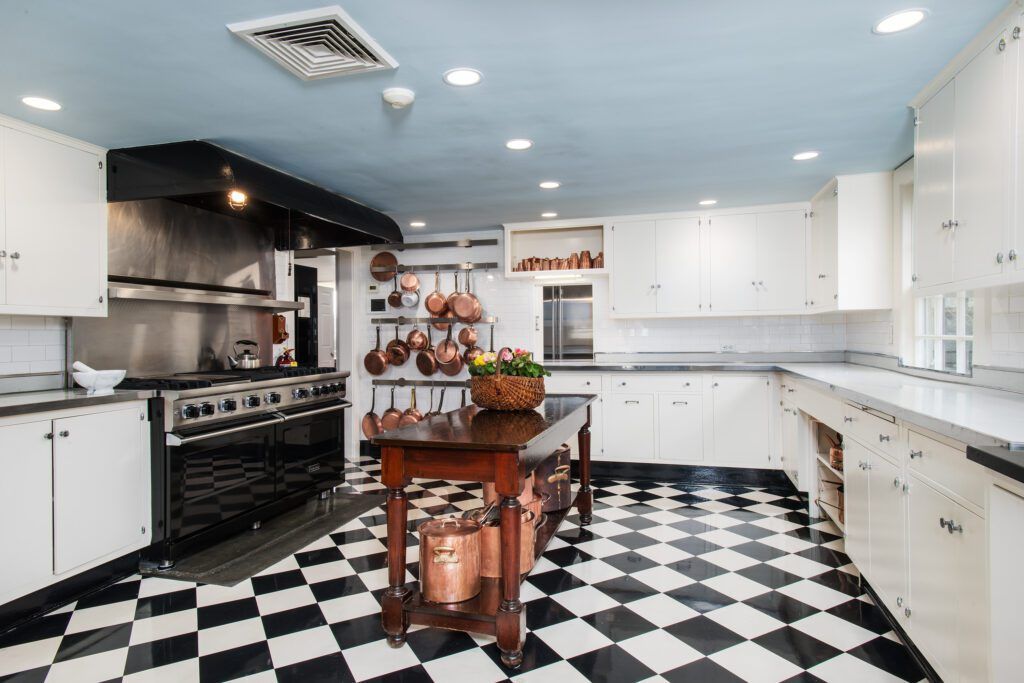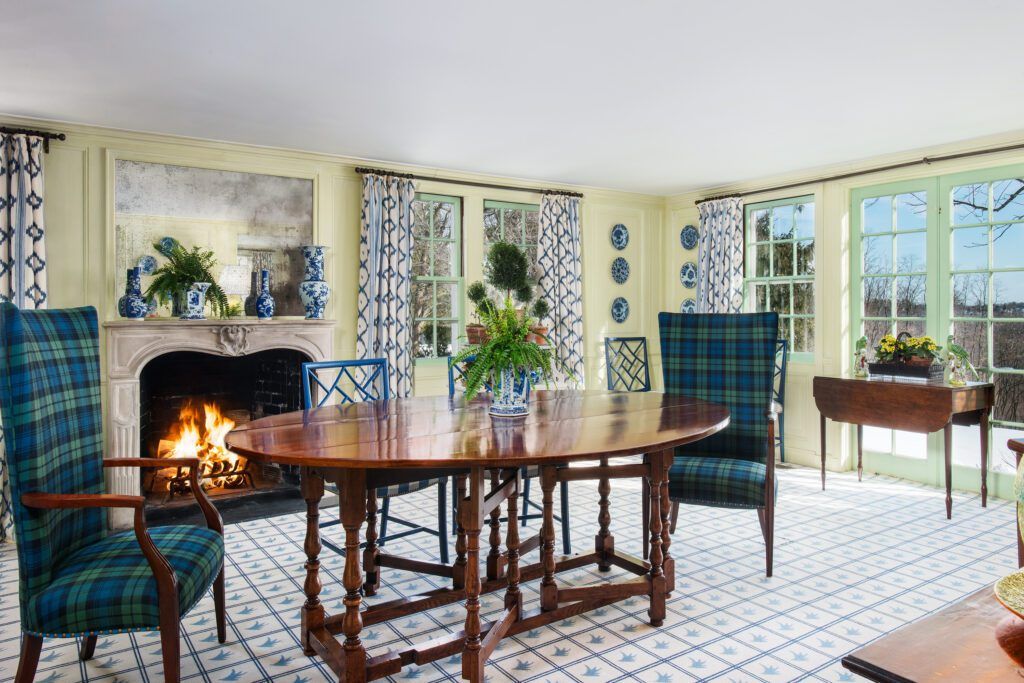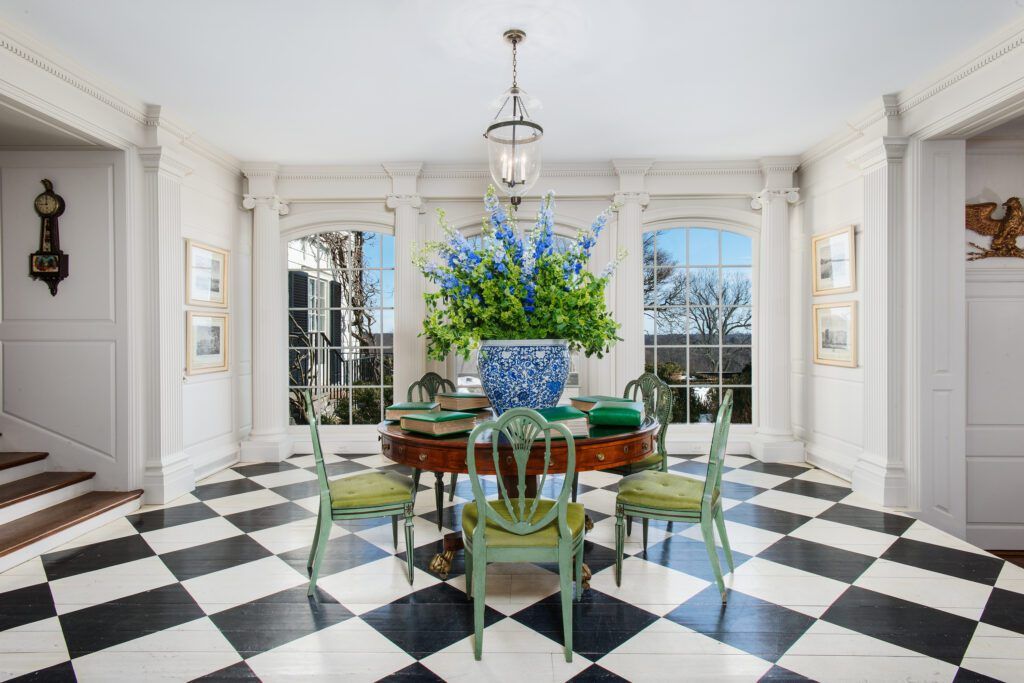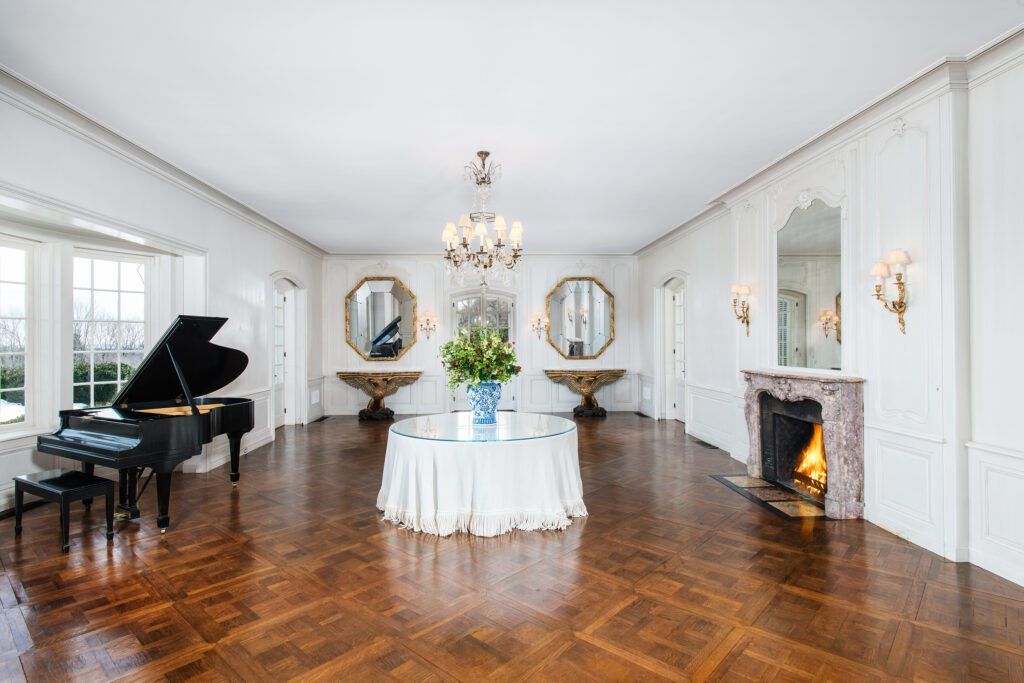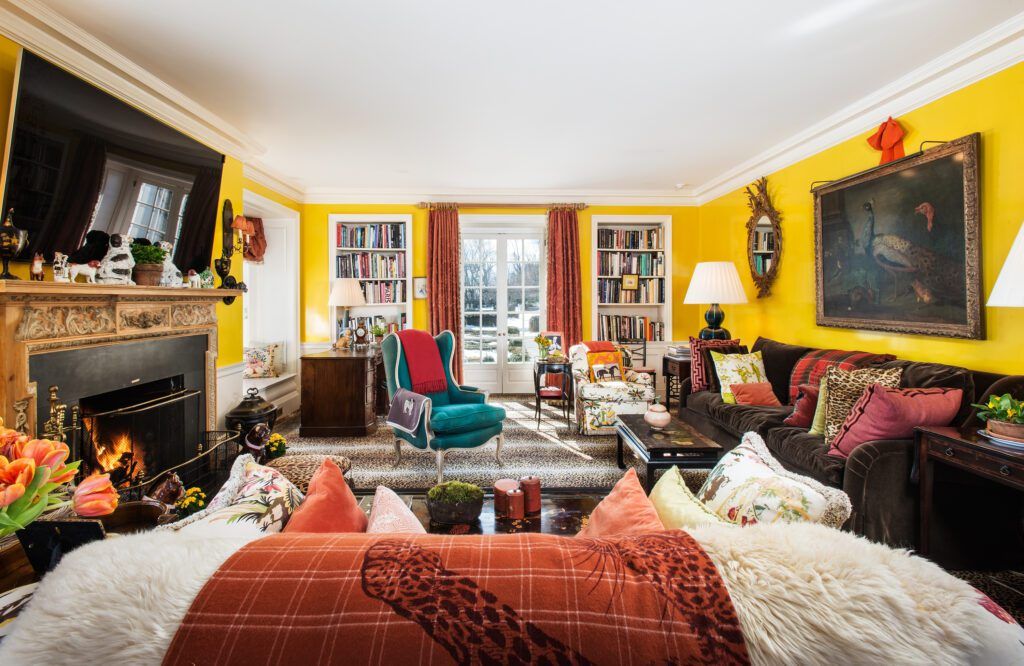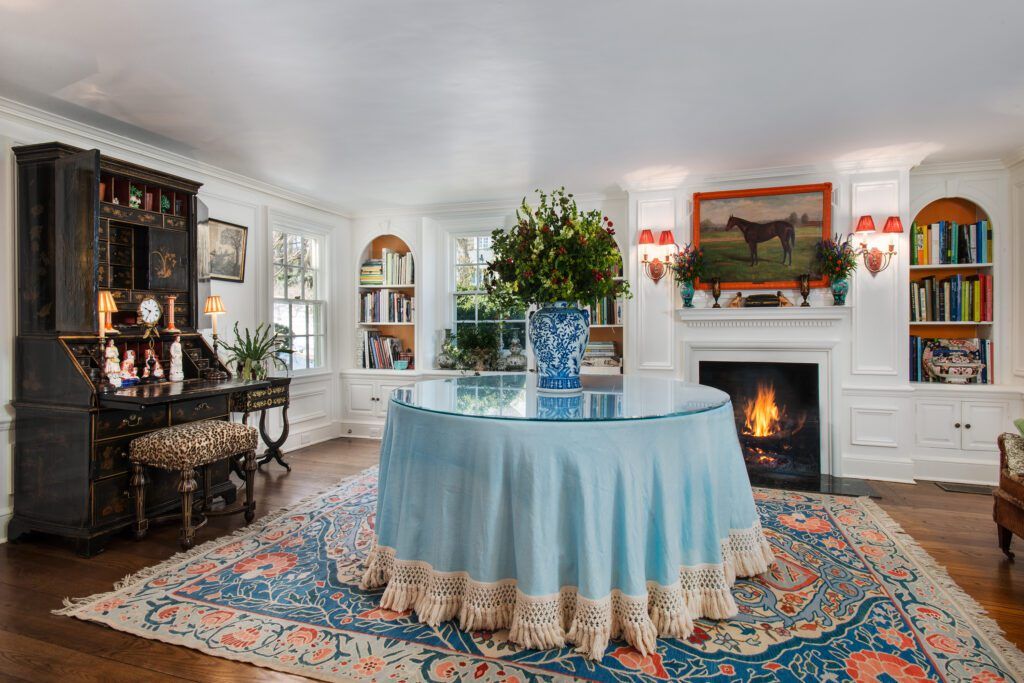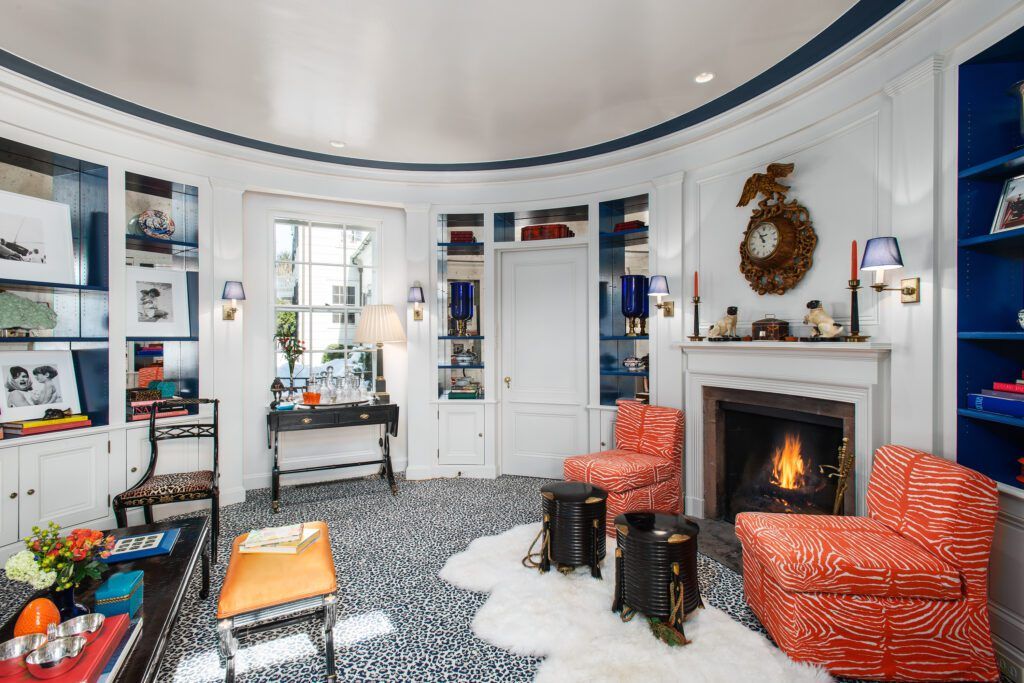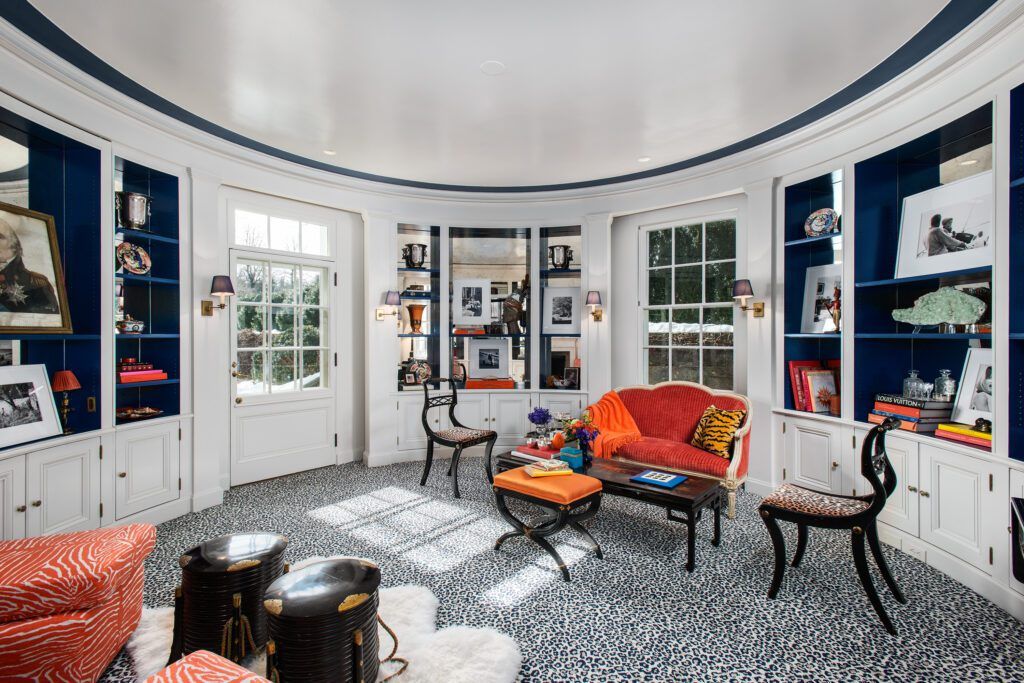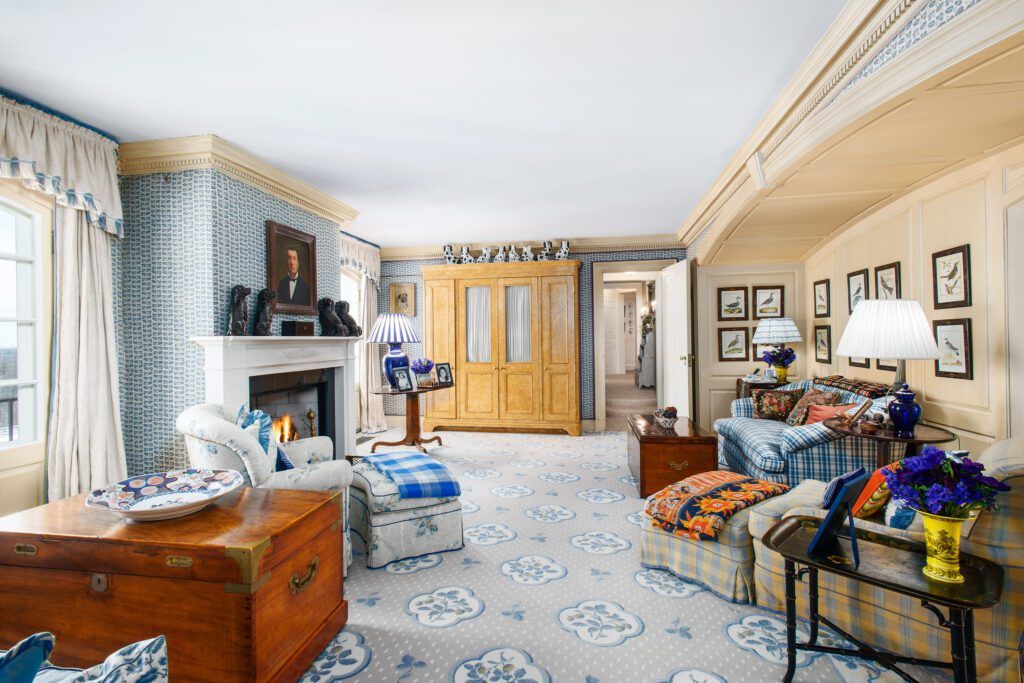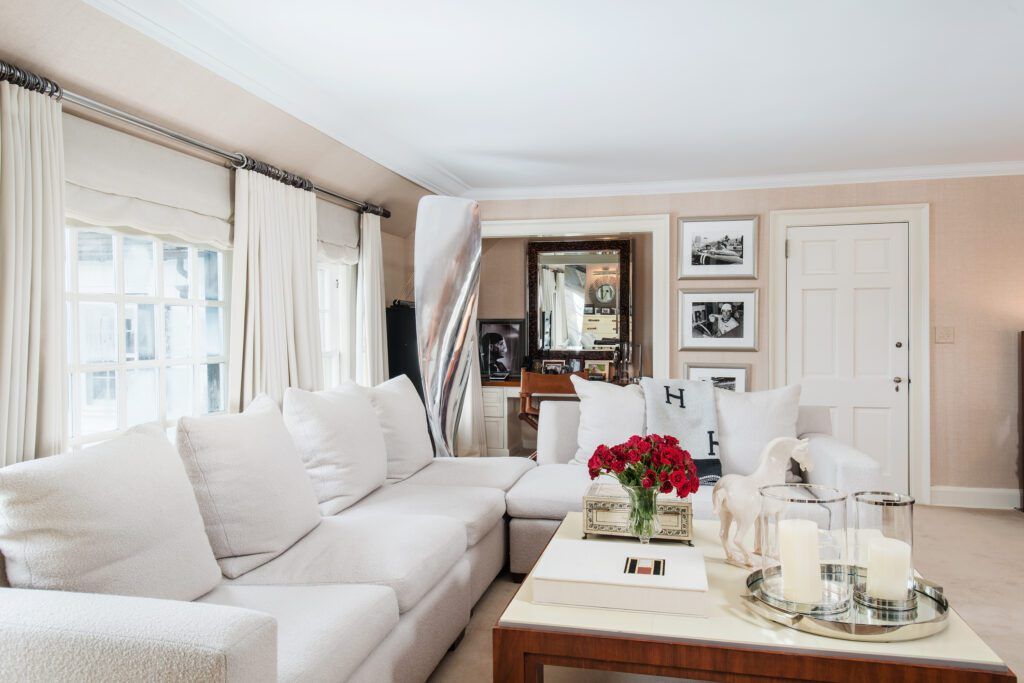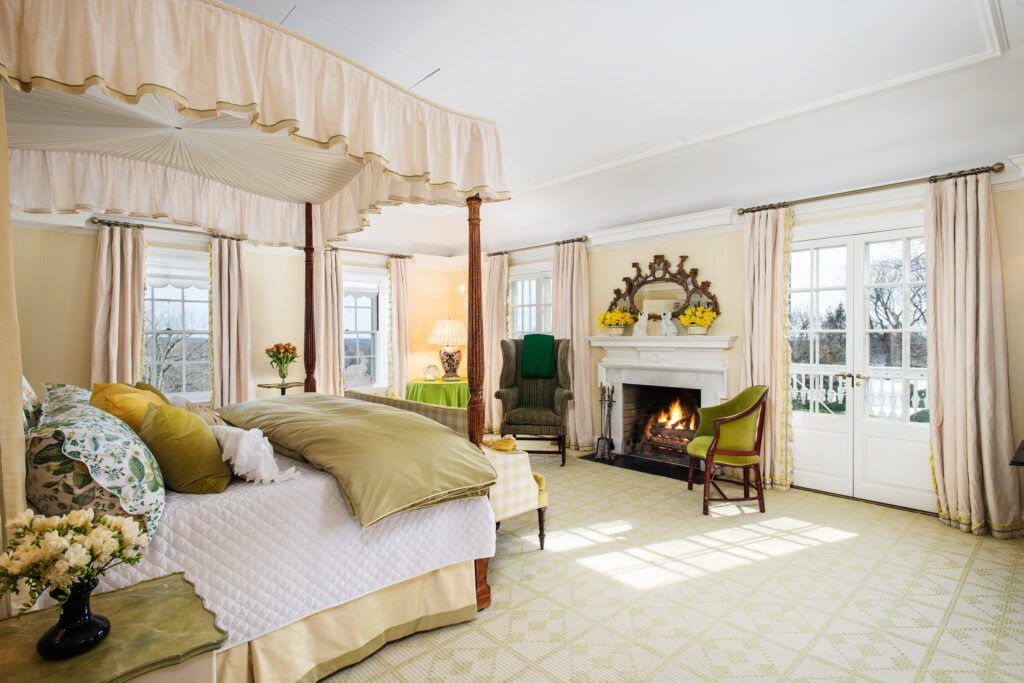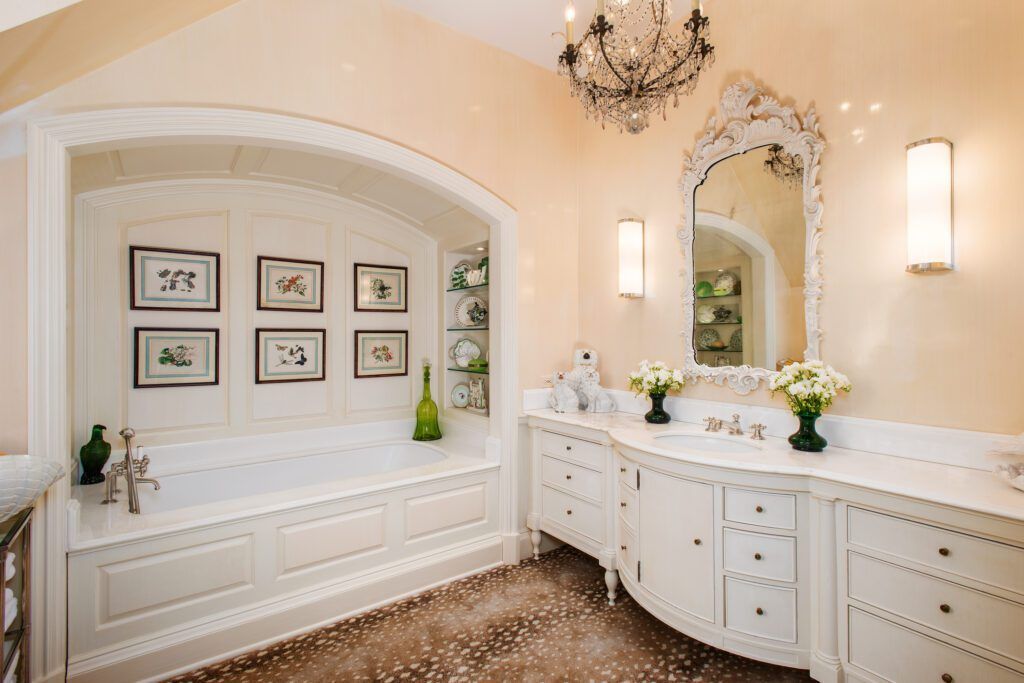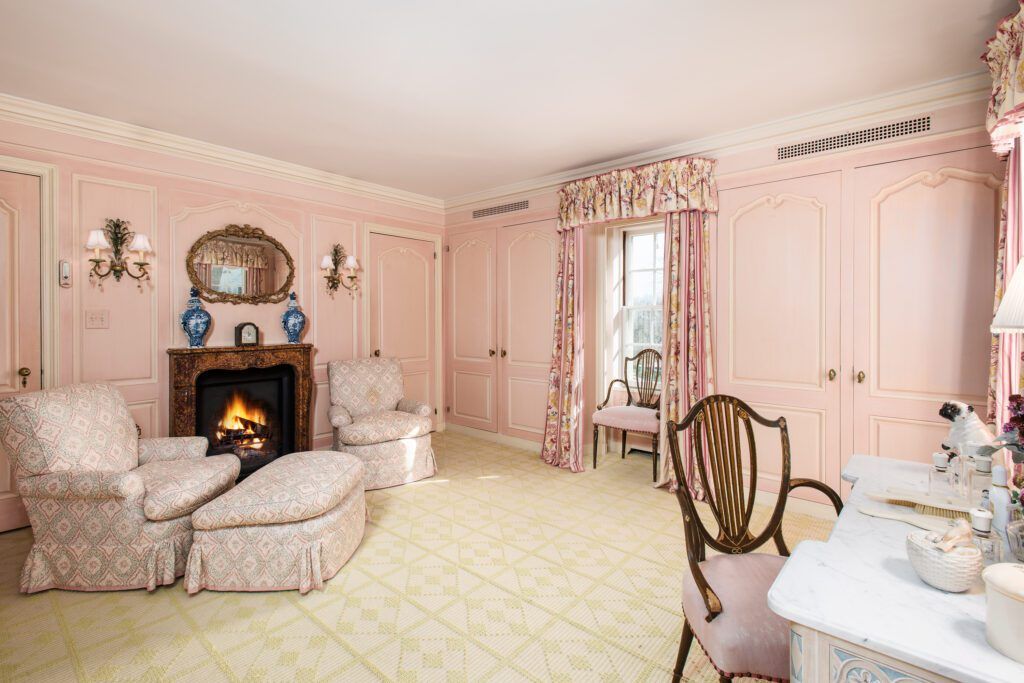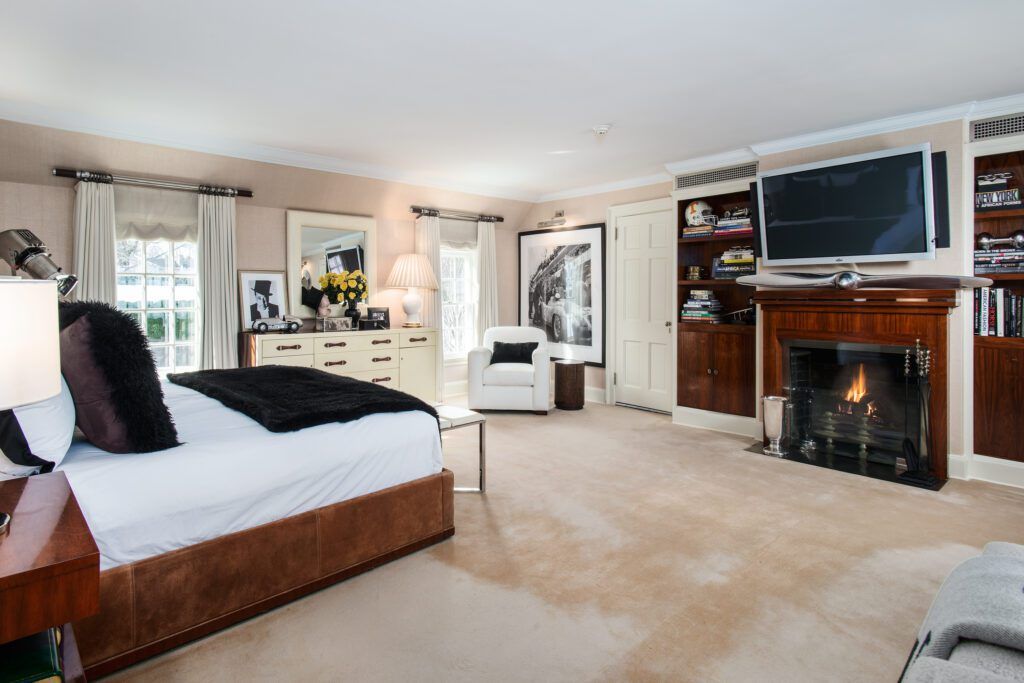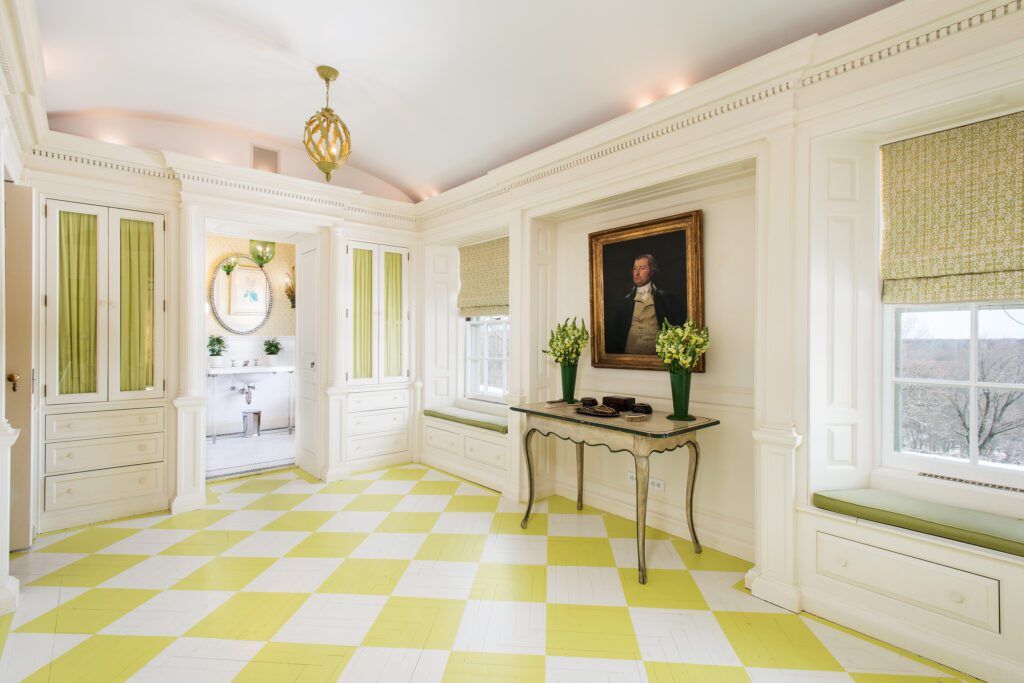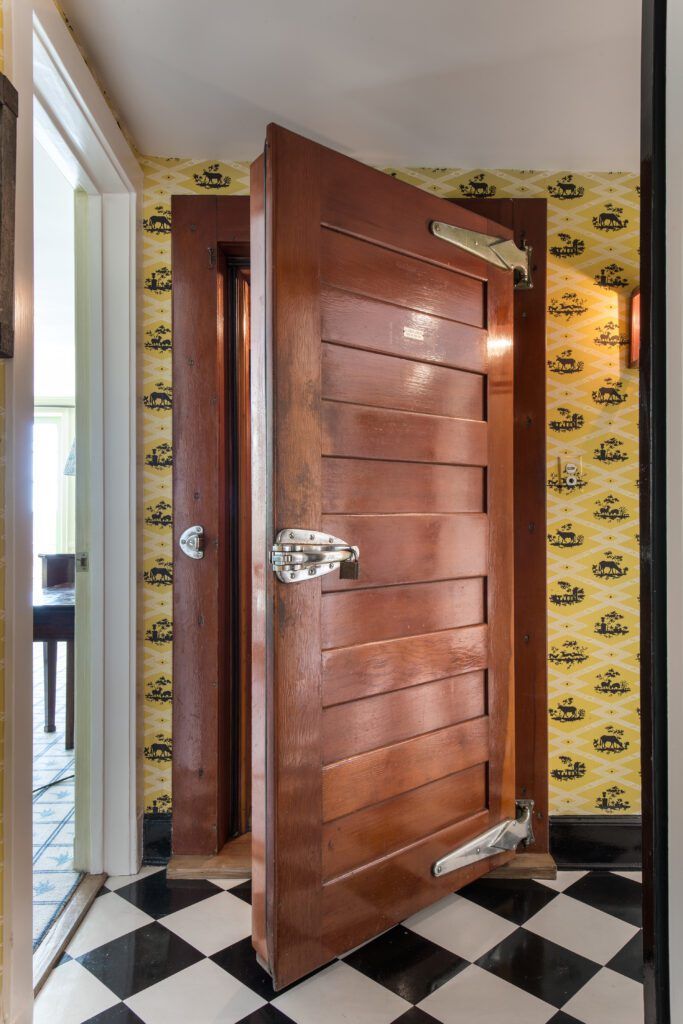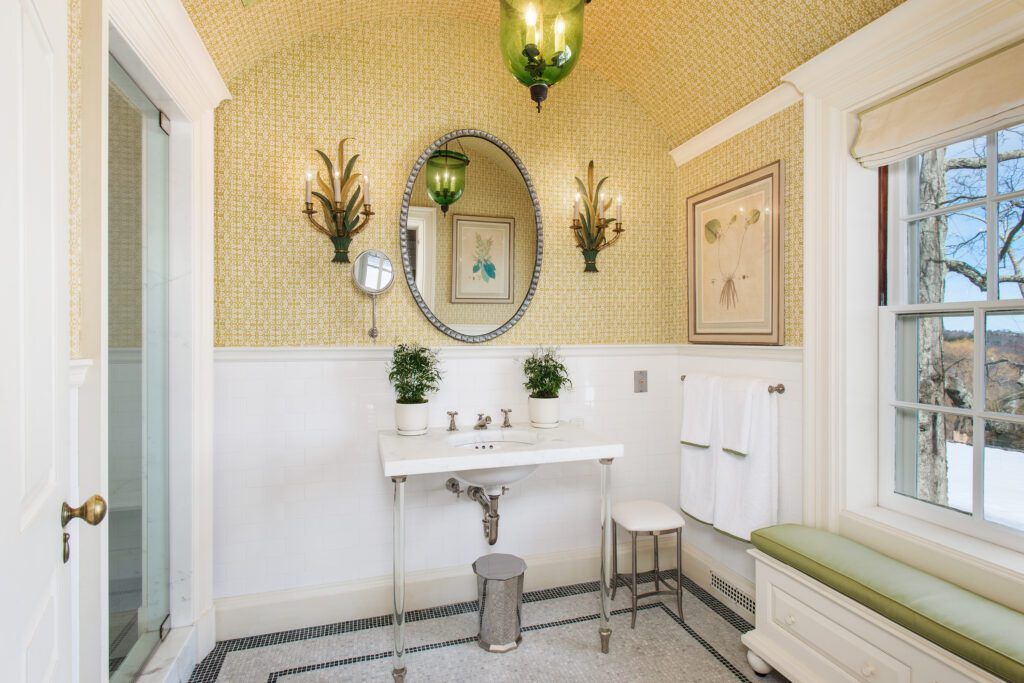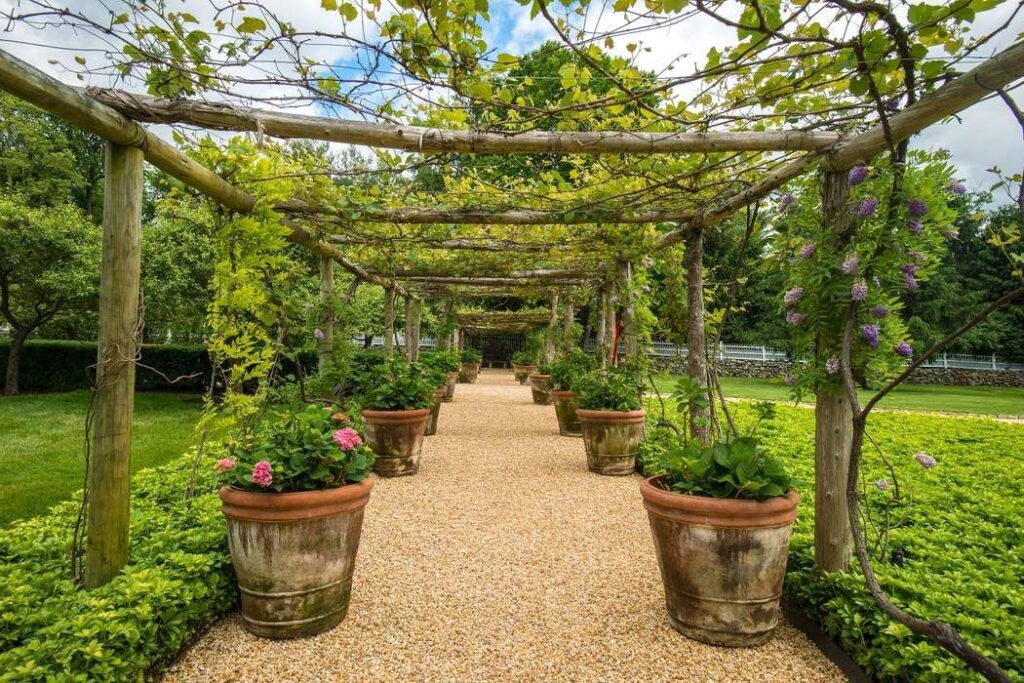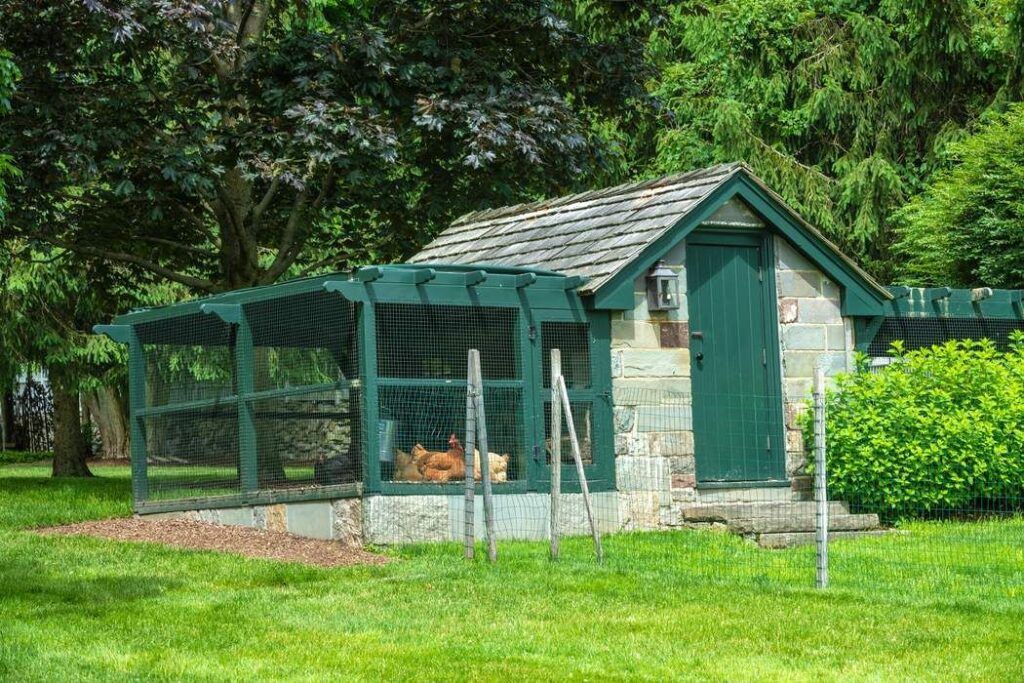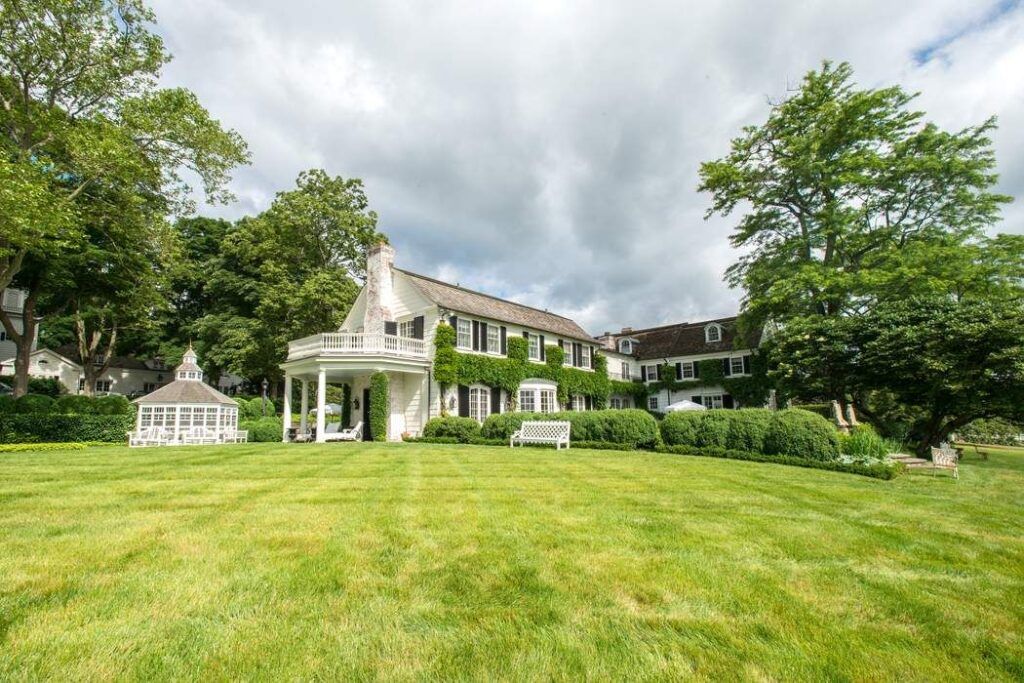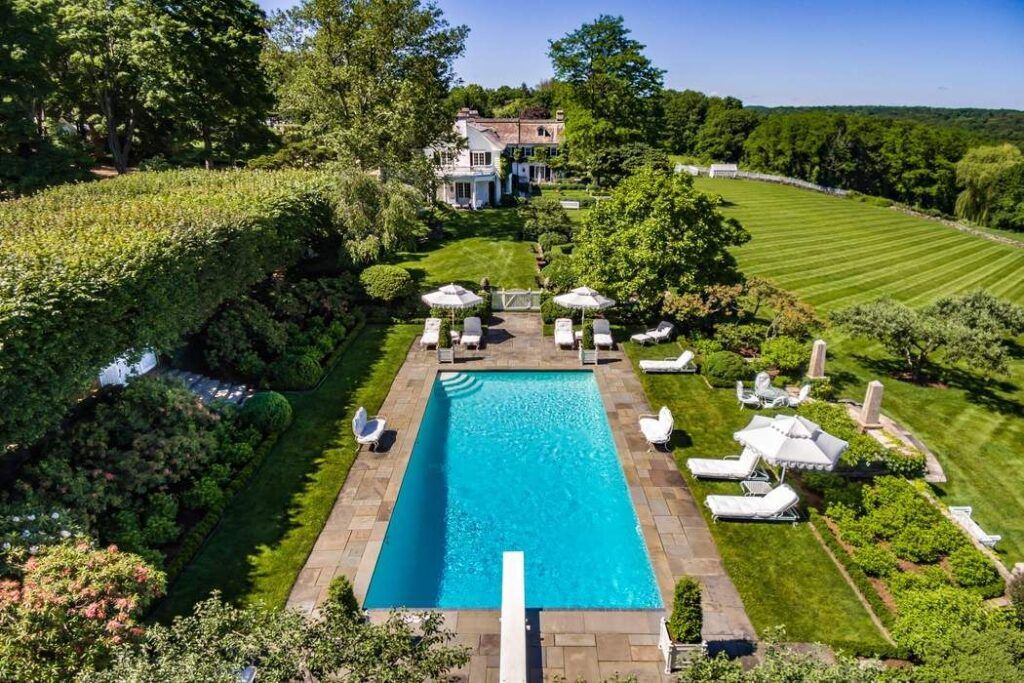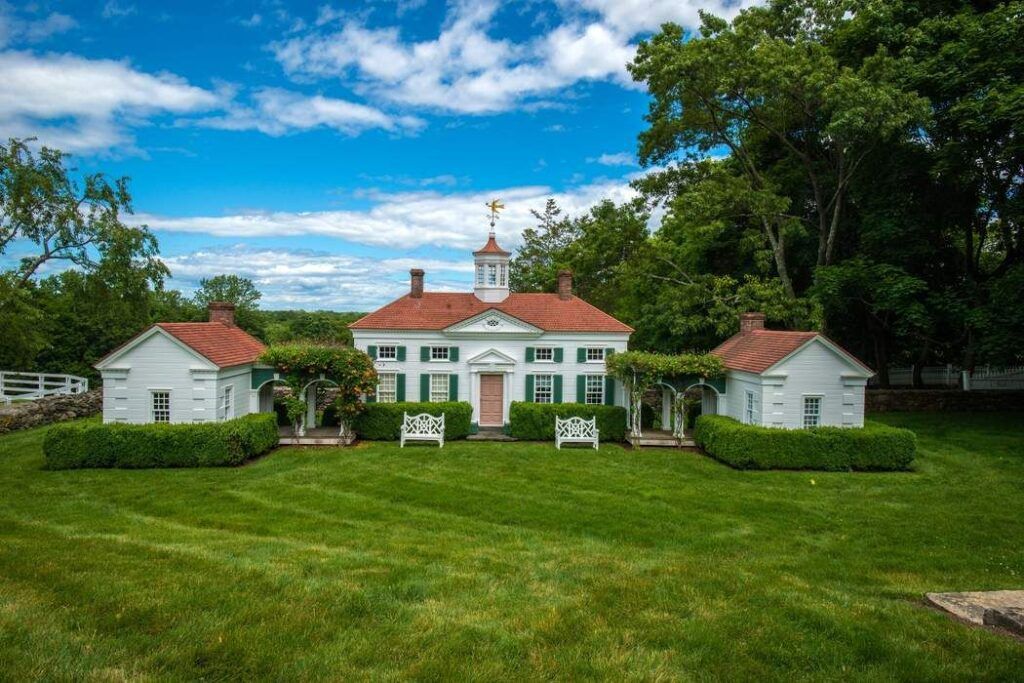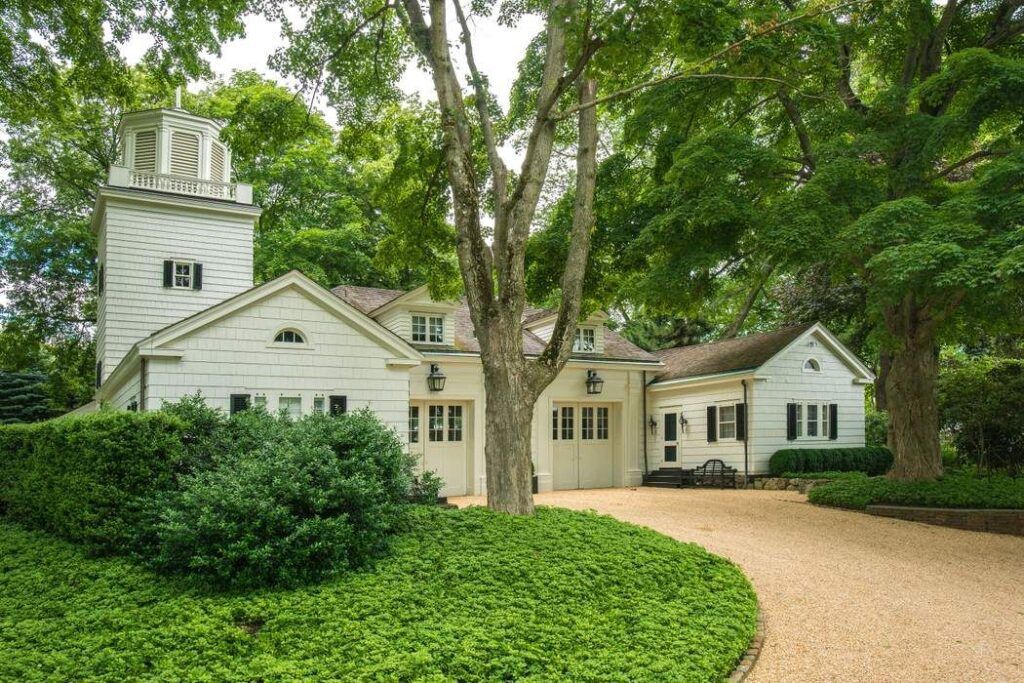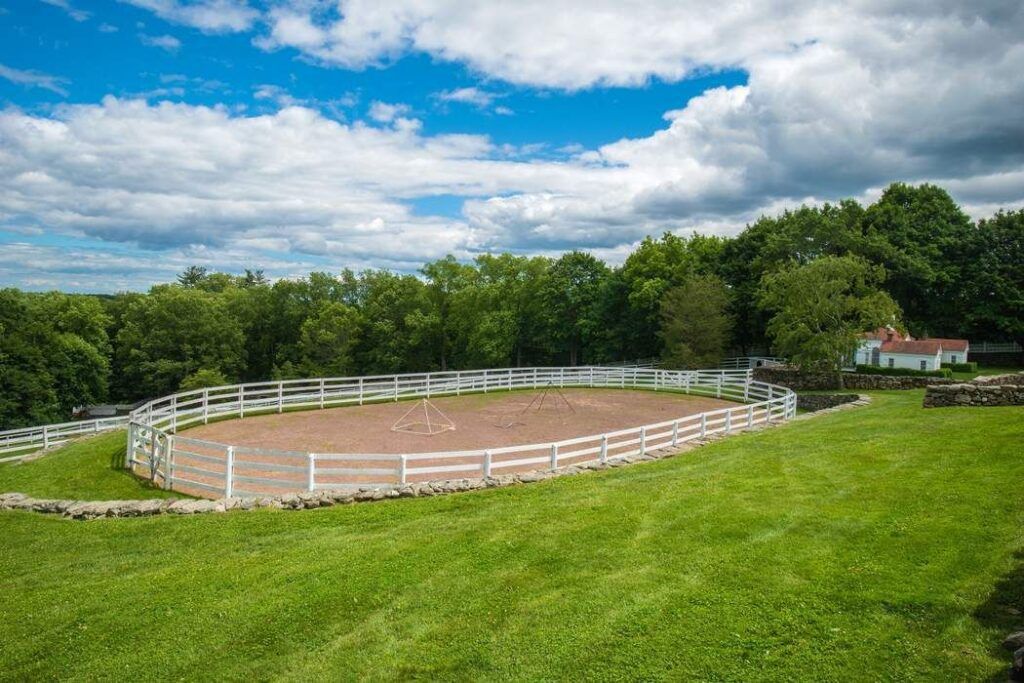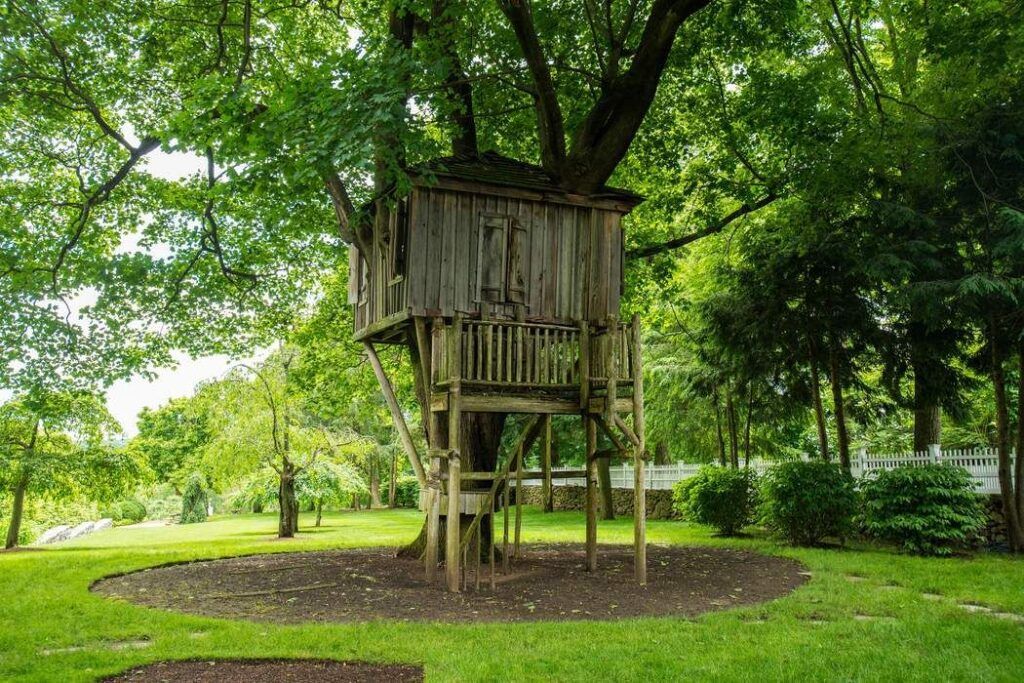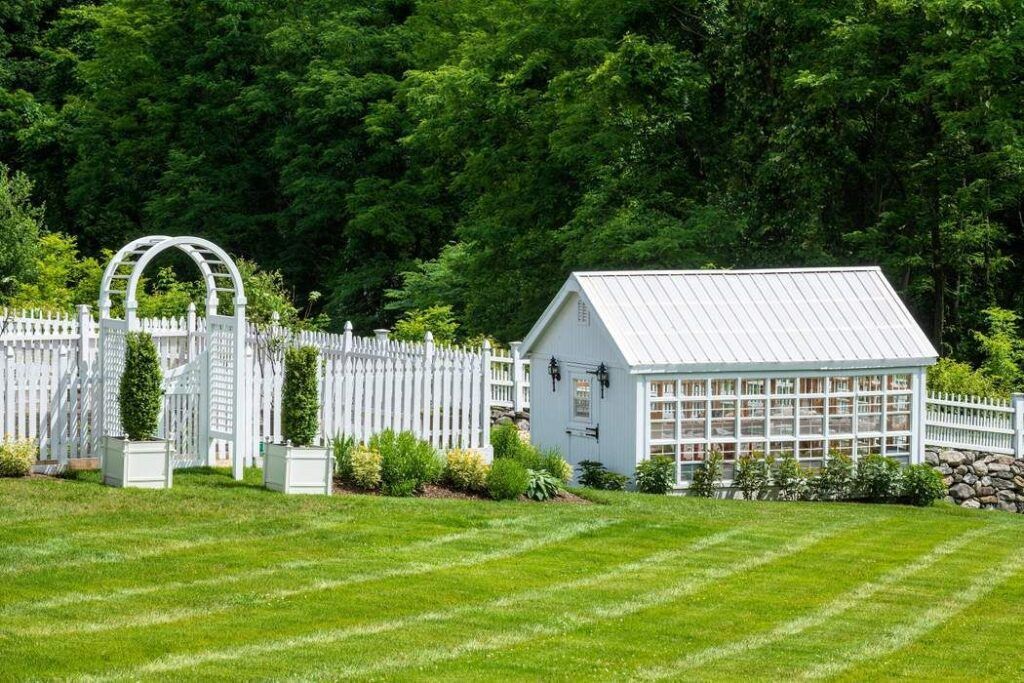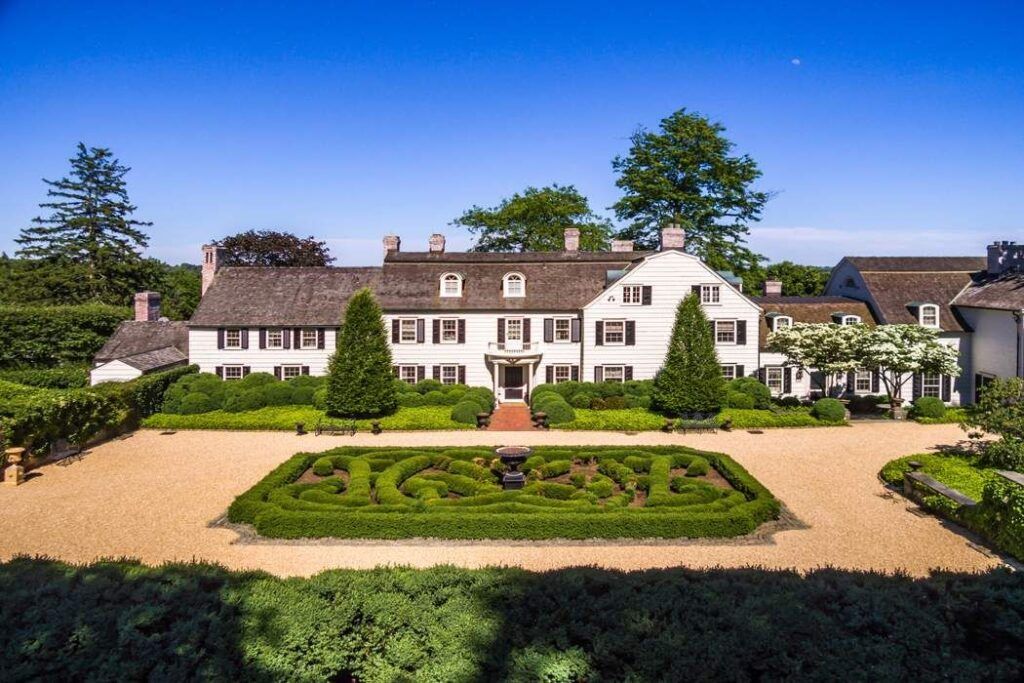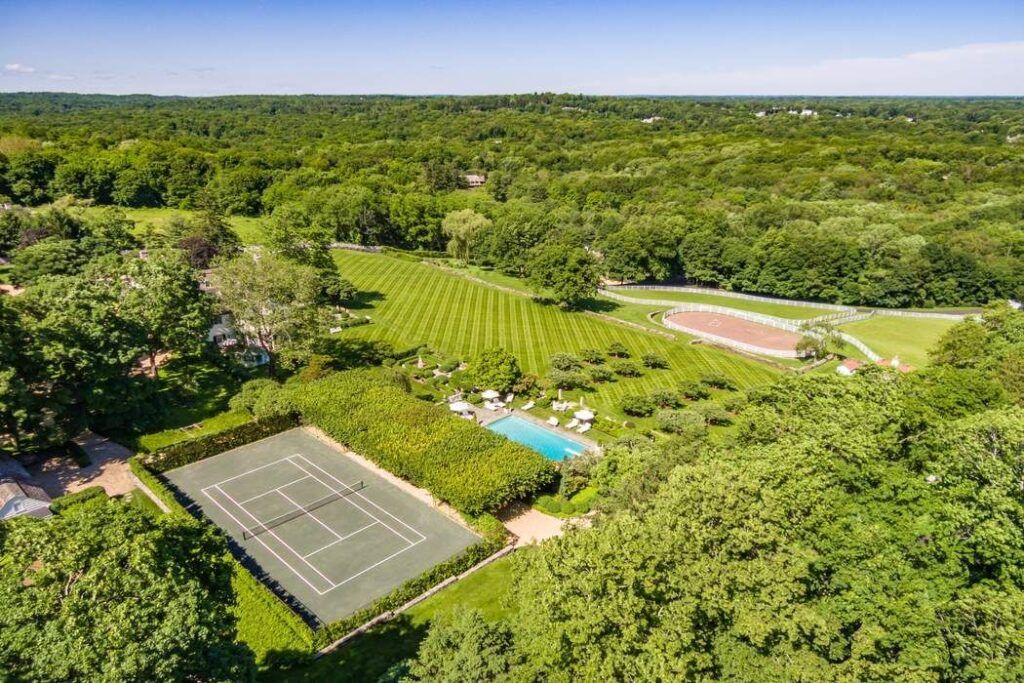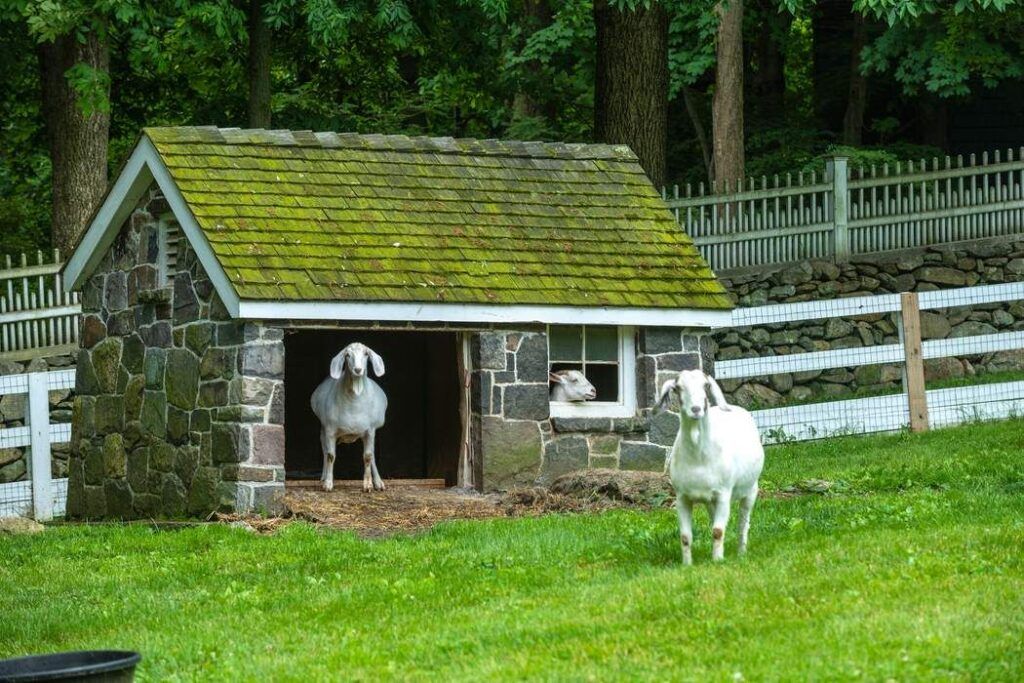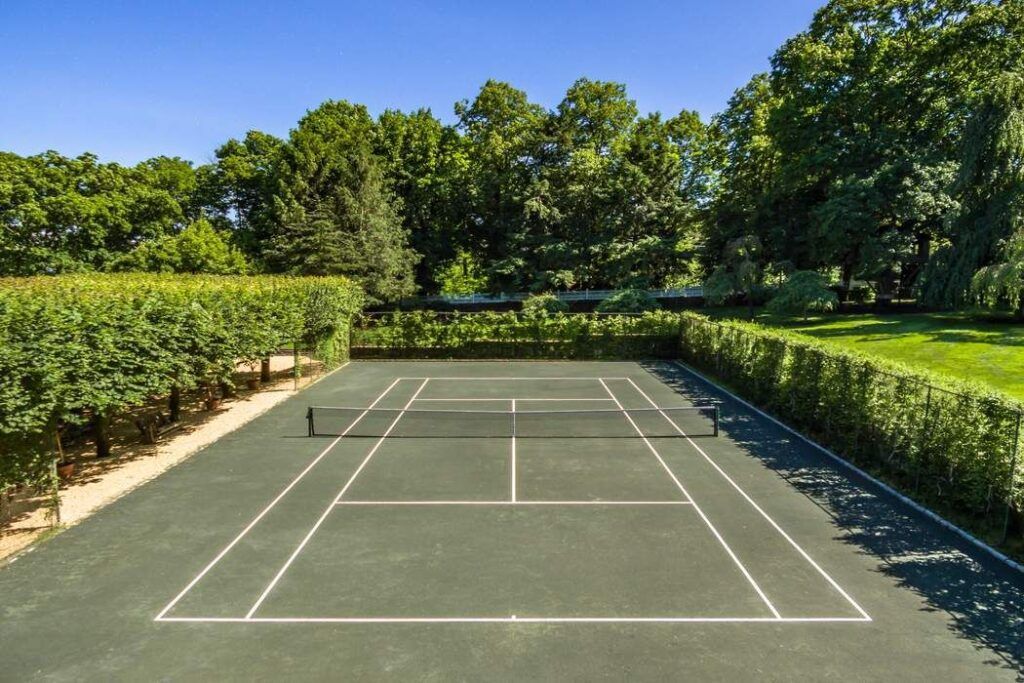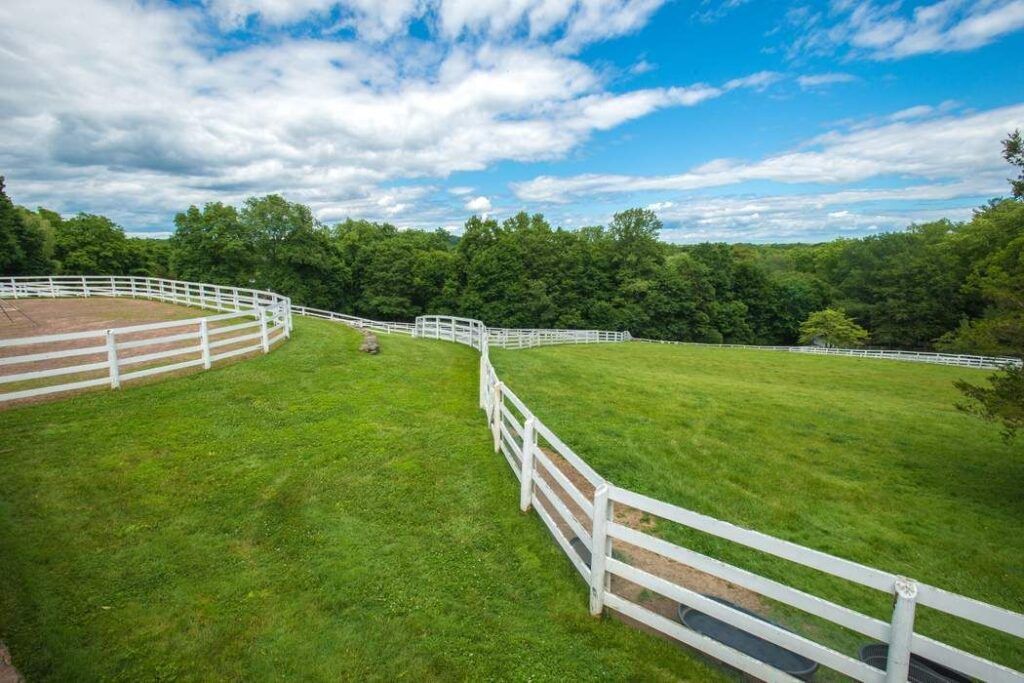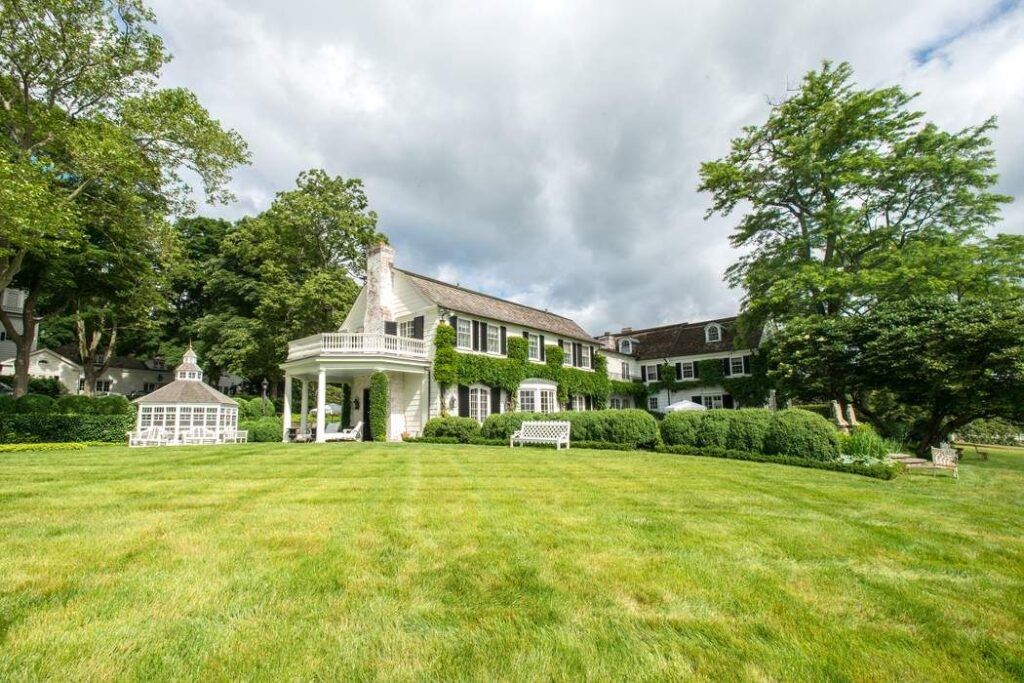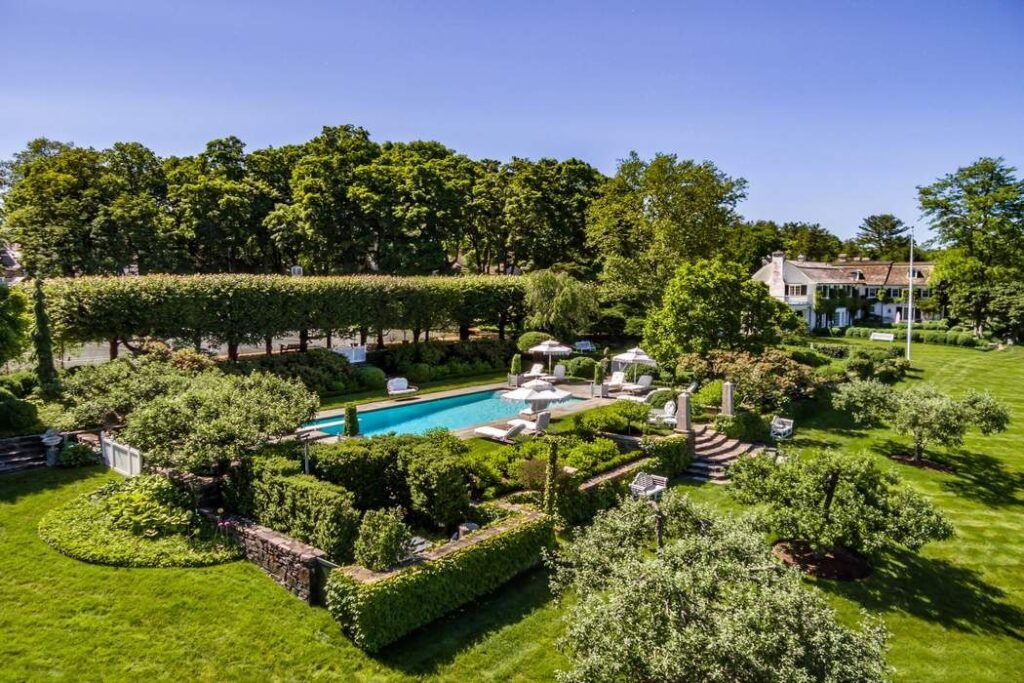Celeb style: Susie Hilfiger’s Greenwich estate
While “Susie Hilfiger” isn’t necessarily a household name, she is the woman who helped make Tommy Hilfiger one. After marrying in 1980, Tommy and Susie Hilfiger worked together to build the family brand, eventually achieving national success in the mid ’90s when the oversized “preppy” style made waves in the hip-hop scene (many thanks to Snoop Dog on SNL). In 1995—at Tommy Hilfiger’s zenith—the couple purchased their Denbigh Farm in Greenwich, Connecticut, for $8.5 million. A divorce and an acquisition later, Susie Hilfiger is selling the Greenwich estate for a whopping $40 million.
Fixed on a 17-acre piece of property in the opulent enclave of Greenwich, the Hilfiger estate is approximately 14,000 square feet, featuring seven bedrooms, nine full baths and four partial baths. Built in 1775, the home’s historical integrity has been preserved through pieces like the recessed curved stairwell in the grand foyer—and did we mention the estate pays homage to the colonial style of the 18th century with a children’s playhouse replica of Mount Vernon?
A roaring fireplace burns in each room throughout the home, and a collection of furniture from the Duke and Duchess of Windsor’s Paris home can be found inside. The ornate detailing of a handpainted Chinese rice-paper wallpaper has been a longstanding characteristic of the dining room since the 1930s.
To give us a tip or two on achieving a lavish dining room like Susie’s, we reached out to Claire Major of Artvark Ltd. to prove that a conspicuous and extravagant design can still be polished and refined.
“She’s chosen a wallpaper that, although a very busy pattern, is light in color so it doesn’t overpower the rug or even equal the color value of it,” explains Major. “The chair seats and drapes are pulled from the rug colors, keeping some cohesiveness in the room. The furniture is medium to dark in value, with the antique table blending well with the rug and drapes. Other light elements like the window, the mantel and the doors and trim are all white, which lifts the room up and gives it air and space.”
See Major’s tips alongside more rooms from the equestrian estate below:
• I love wallpaper, and although this room is beautiful and interesting, I’d use vintage-inspired wallpaper with a mix of more modern furniture and lighter colored antiques. Juxtaposing the two can satisfy the vintage/antique desires of someone while keeping it fresh and contemporary looking.
• Which style of furniture should you use to complement a bright pattern, you might ask? For upholstery, solid for sure. Velvet, velour, linen. If you use a multi-color piece as a jumping-off point, then pull the solid colors from it. And then maybe use a subtle pattern like a thin stripe with lots of light between them and a blended color pattern that looks almost solid from a distance as throw pillows. For case goods, I’d use furniture with minimum curves, aiming for a more straight-lined midcentury modern piece, or a light-colored wood or painted antique.
• To use color in a design without growing tired of it, use it in things that are easy and not so expensive to change, like your rug and throw pillow vs. wallpaper and draperies. And for art—never, ever forget art—you can get so much color by having it be the only colorful thing in the room. Art can be expensive but doesn’t always have to be if you know where to look. I tell people that you never can have too much art, because it can really transform a room when and if you decide to change it out.




